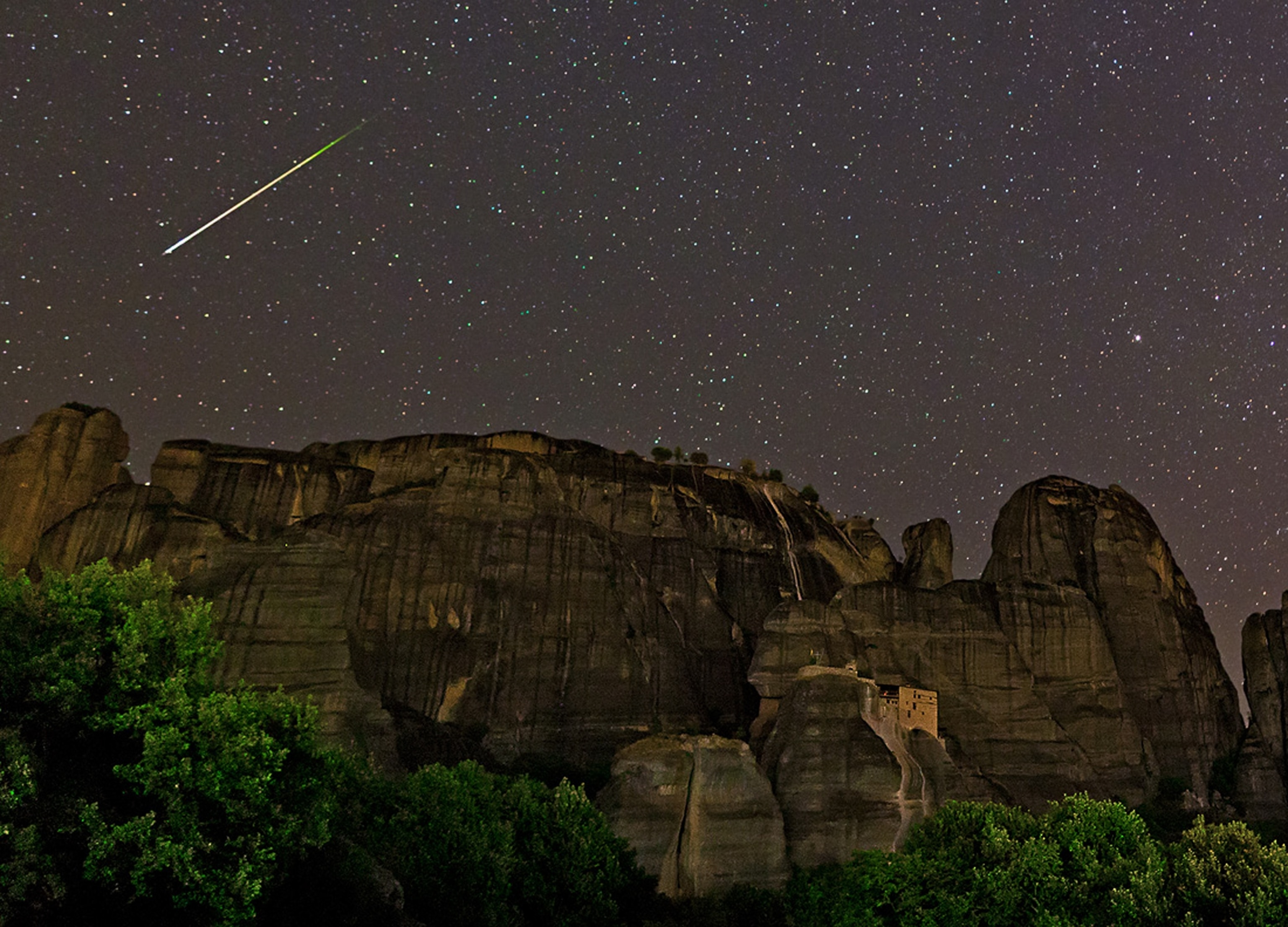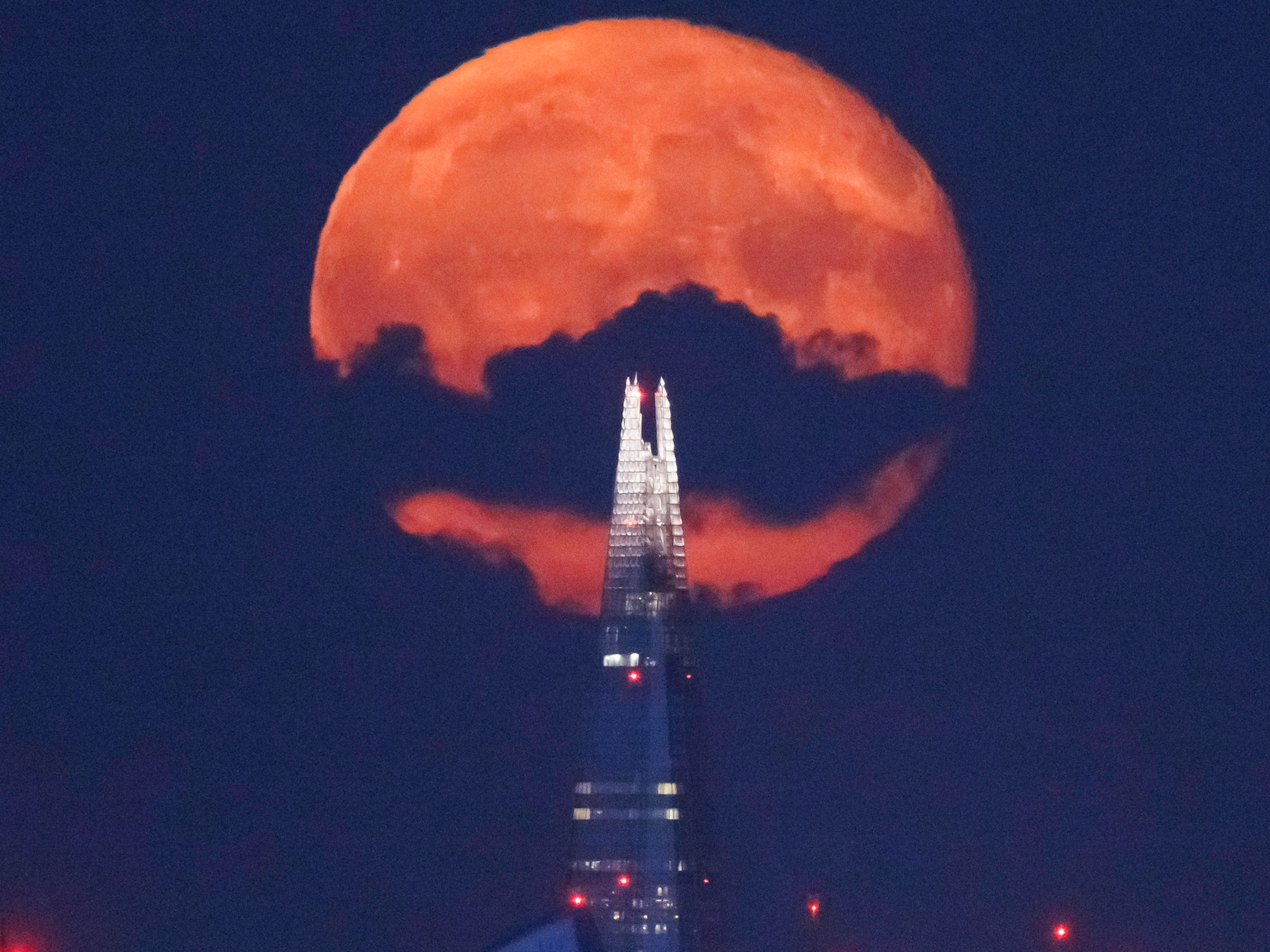
A Guide to Watching the Spectacular Perseids
The annual meteor shower will dazzle skywatchers with a flurry of shooting stars.
Skywatchers around the world are gearing up for the famous August Perseid meteor shower, which peaks August 11 through 13 and promises to be the best celestial fireworks show of the year.
The Perseids grace our skies when Earth plows into a stream of fragments—ranging in size from sand grains to boulders—left behind by a comet. These particles slam into the atmosphere at speeds of 100,000 miles (160,000 kilometers) per hour, causing the meteors to burn up in the upper atmosphere, which produces a momentary streak across the overhead skies known as a shooting star.
"As the Earth passes through the dust trail of comets, it encounters debris—some of which can be the size of grapefruit or larger—which [then] can cause fireballs," said Raminder Singh Samra, resident astronomer at the H.R. MacMillan Space Centre in Vancouver, British Columbia.
"The chances of seeing fireballs always increase when there is a strong meteor shower like this one," he added.
Expectations this year are particularly high for the Perseids because the waxing crescent moon will set early, allowing even the fainter meteors to be seen, explained Samra.
"The Geminids [in December] can at times rival the Perseids with their high rate of meteors per hour; however, this year the moon will play spoiler during the peak nights of the Geminids, so the Perseids may very well turn out to be the best meteor shower for 2013," said Samra.
(Related: "Perseids Quiz: Are You a Meteor Shower Mastermind?")
While most viewers will be looking at meteors zip across Earth's skies, some backyard and professional astronomers will have their camera-equipped telescopes pointed at the dark side of the moon before it sets. They'll be looking for the occasional Perseid meteor impact blast that may be visible.
"By finding meteor strikes on the surface of the moon, amateur astronomers can help play a vital role in assessing the risks that future astronauts will face when they return to the moon," said Samra.
When is the best time to look up?
As the Perseids' official peak occurs around 6 p.m. GMT (1 p.m. EDT, 10 a.m. PDT) on August 12, observers in Asia will be best positioned to observe the most meteors in the overnight hours. (Check this city list for your local Perseid peak time.)
North Americans and Europeans will have the pre- and post-peak times for viewing, beginning late Sunday (August 11) night into the pre-dawn hours of Monday, and then again later after local nightfall. Due to the orbit of the shower's parent comet, the Perseids are primarily a Northern Hemisphere sky show. Skywatchers in the Southern Hemisphere will have the chance to observe the shower, but it won't be as brilliant.
"Wherever you are, expect meteor shower activity to pick up in your local pre-dawn hours," said Samra. "This is due to the side of the Earth that's rotating toward the sun, scooping up more debris from the comet debris trail."
Where in the sky will the shooting stars appear?
The meteors will appear to radiate out from the shower's namesake constellation Perseus, which rises after local midnight in the northeastern sky. But it's recommended to face the northeast starting at local nightfall to catch even the straggler Perseids.
To see the highest rates of meteors, however, Samra recommends timing your observations for when Perseus rises to its highest point in the sky—in the pre-dawn hours on Sunday, August 11, and Monday, August 12.
How many shooting stars will be visible?
Typically if sky conditions are dark, you can expect to see between 60 and 100 meteors per hour. The time of night and your proximity to dark skies are factors that may substantially affect what you can see. From suburban skies, expect rates to drop anywhere from a half to a third as many shooting stars per hour.
What is the best way to enjoy the meteor show?
The best place to see the Perseids is from a dark site away from city lights with a clear unobstructed view of the overhead sky. There's no need for any high-powered views of telescopes or binoculars—the unaided eyes are best because they can soak in the entire sky. Meteors can appear in all parts of the sky.
The only equipment needed is a blanket or reclining lawn chair and some hot chocolate.
"From the city you can still see some of the brighter meteors; however, to fully enjoy the show one must be away from city lights," said Samra.
"The Milky Way is often a good indicator if you are in a dark site. If you can easily see the Milky Way above your head, then the observing site is dark enough."
For more sky events check out our weekly skywatching column.
Follow Andrew Fazekas, the Night Sky Guy, on Twitter and Facebook.




